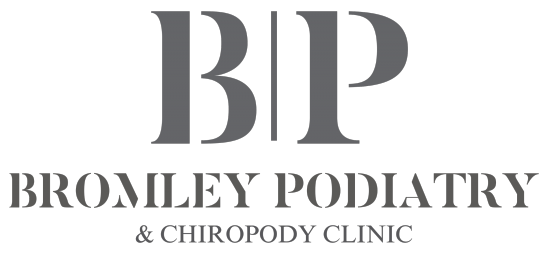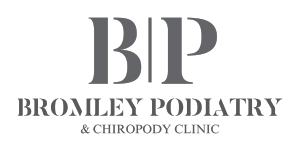Bunions
About
What are bunions?
A bunion, also known as ‘hallux valgus’, is a deformity of the big toe in which the big toe excessively angles towards the second toe and leads to a bony lump on the side of the foot. This can also form a large sac of fluid, known as a bursa, which can then become inflamed and sore. Once the big toe leans toward the second toe, the tendons no longer pull the toe in a straight line, so the problem tends to get progressively worse. This condition can also lead to corns and calluses development due to the uneven pressure distribution.
What causes them?
They are most often caused by a defective mechanical structure of the foot, which is genetic, and these certain foot types make a person prone to development of a bunion. Poorly fitting footwear tends to aggravate the problem as tight or narrow footwear can squeeze the forefoot, crowding the toes together and exacerbate the underlying condition, causing pain and deformity of the joint.
Bunions can also be caused by certain forms of arthritis.
Who gets them?
Although anyone can get a bunion, they tend to be more common in women, possibly due to some of the more restrictive footwear typically worn (more than 15% of women in the UK suffer from bunions). Women also tend to have looser ligaments. If your parents or grandparents have them, you may also be more prone to developing them.
Are they serious?
Some bunions are not painful but do cause difficulties with footwear. The main problem sometimes is the pressure from the big toe joint can lead to a deformity in the second toe toe joints which can often lead to a hammer toe deformity and development of painful corns and calluses.
What are the treatments?
Your podiatrist may recommend the following:
■ Exercises
■ Orthoses (special devices inserted into shoes)
■ Shoe alterations or night splints which hold toes straight during sleep (helps to slow the progression of bunions in children)
These are all conservative measures and they may help relieve symptoms and may help to slow down the progression of them , however there is no evidence they can correct or reverse the deformity. We are trained to identify significant instability and mechanical problems with your foot and can prescribe specific treatments which may help to control the progression of the deformity. We may refer you for surgery if appropriate , which can involve a combination of removing, realigning and pinning of the bone. However, there are more than 130 different types of operation and so each individual surgery is different. As with all surgery, there are risks and complications, so it is not usually advised unless your bunions are causing pain – or are starting to deform your other toes.
How can I prevent them?
Wearing sensible shoes that fit well is a good preventative measure. If you notice a bump developing where your big toe joins the foot, it may be time to switch your footwear. Try to opt for wider shoes that provide your toes with room to move and keep your heel height to no more than 4cm for maximum comfort. The following also serves as a useful guide:
■ Minimise the wear of ballet pumps or slip on shoes which force your toes to claw as you walk, straining the muscles if worn over a long period.
■ Wearing a shoe with a strap or lace over the instep holds the foot secure and helps stop your foot sliding forward.
■ Vary your heel heights from day to day, one day wearing low heels and the next day slightly higher heels.
■ If you want to wear a heel every day, keep heel heights to 4cm or less.
■ Daily calf stretches to counteract the shortening of the calf can help to keep feet supple.
When should I see a podiatrist?
If you experience any foot care issues that do not resolve themselves naturally or through routine foot care within three weeks, it is recommended that you seek the help of a HCPC registered Podiatrist.
Bromley Podiatry & Chiropody serves the following locations: Bromley, Pettswood, Chislehurst, Orpington, Beckenham, Shortland, Hayes, Sundridge & Grove Park. Please see our contact page for directions and contact details
Book your appointment now online or call 0208 313 3133
Treatments we provide
We are fully qualified to provide you with a range of professional treatments for all foot and lower limb related problems.
MAKE AN ENQUIRY BY CALLING
0208 313 3133
Alternatively you can book your appointment with us online today!
Initial consultations and treatments start from £75






